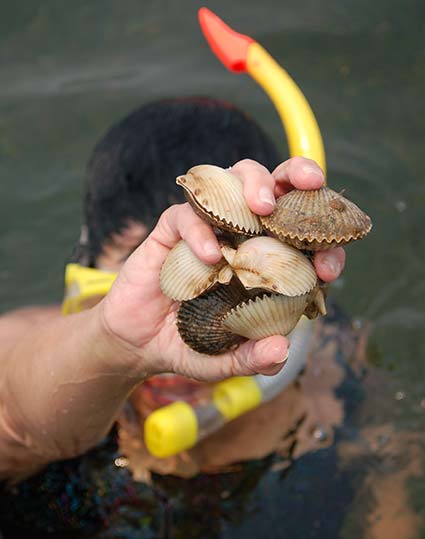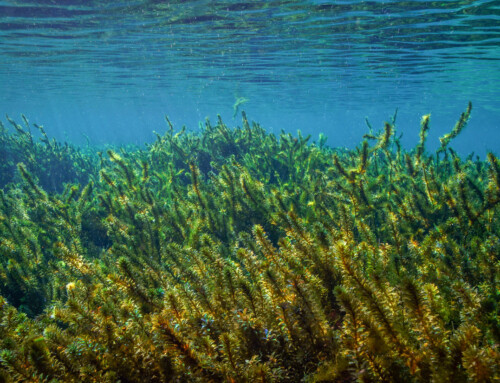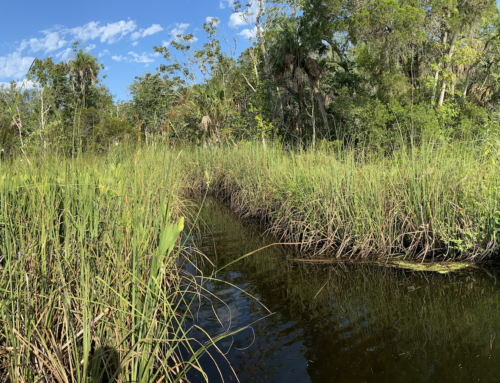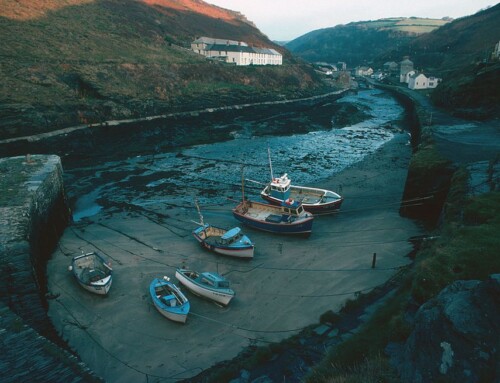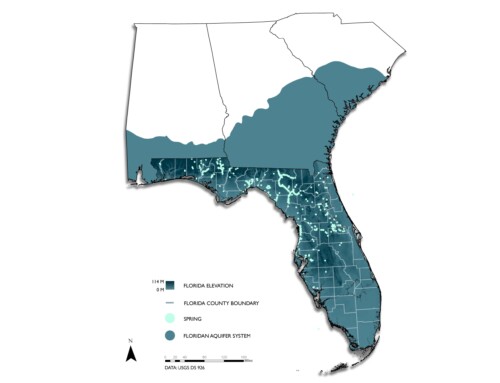During the summer, tourists flood to Crystal River to spend their days scalloping in the Gulf of Mexico. There are many different types of scallops, but the ones you catch just out the mouth of Crystal River are bay scallops. Typically, the shell of a mature bay scallop is about three inches wide and the meat is only about a half-inch wide. Bay scallops live in the warm, shallow waters of the Florida Coast and are usually found hidden in seagrass beds. You can easily distinguish a bay scallop from other mollusks by its electric blue eyes (see image below and to the left). Also, about one in every several hundred scallop shells is orange. If you’re lucky you might be able to find one like the scallop shown below on the right.
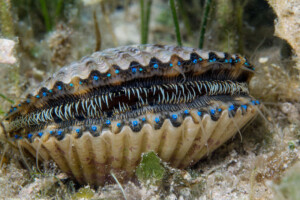
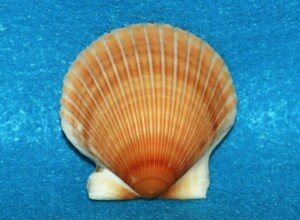
Bay Scallops vs. Sea Scallops
Bay scallops are different from the sea scallops sold in restaurants, as the sea scallops live in deeper and colder Gulf water. While sea scallops have more meat, bay scallops are known for being sweeter.
On Crystal River, nothing beats getting up at sunrise, boating down the river, and hopping into the refreshing water to catch your next meal. Sadly, though, the number of bay scallops has been decreasing each year.
Where are the Bay Scallops Going?
For those annual scallopers, you’ve probably noticed how each year you’re forced into deeper waters to catch the same amount of scallops you caught last year. Researchers at the Florida Maritime Museum analyzed a study concerning bay scallop population, and they concluded that degradation of water quality and over catching leads to bay scallop population decline. The scallops that do survive are the ones that live in deeper waters better protected from predators, like humans.
To learn more about the research conducted on bay scallops and the conclusions reached, check out this website: https://www.floridamaritimemuseum.org/post/bay-scallops-on-florida-s-gulf-coast. Also, it you need a reminder about what determines water quality, you can check out my previous posts here.
Scalloping
Currently, the limit on scallops is two full gallons per person (shell and all), with a maximum of ten gallons per boat. One gallon is about 20 scallops, which means around 40 scallops per person and possibly 200 scallops per boat.
While scalloping is an incredible experience, it is important to remember that bay scallop numbers are depleting. We can’t keep consuming them at our current rate. Don’t overdo your catch. Take only what you’ll eat and leave some to propagate next year’s spawn.
Catching scallops is only the first part to a long day of scalloping. The second part is cleaning the scallops, which often takes longer than catching them! The best way to open a scallop is to put them on ice, so their shells pop open a little. It’s much easier to visually see how to clean a scallop than to explain it, so I’ve attached an instructional video here.
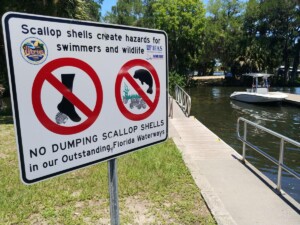
Also, you’ve probably seen signs telling you to not dump your scallops in the river (see above). Covering an area of the river floor with scallop shells prevents sunlight from reaching the riverbed. This stops native grass from growing and therefore lowers the overall oxygen output of the aquatic vegetation. If you’ll recall from the dissolved oxygen post (linked here), fish need an abundance of dissolved oxygen in the water to survive.
Scallop shells are not naturally found in freshwater, so it is harmful to dump them in Crystal River. Since scallops are native to the Gulf, their shells can be safely dumped in the Gulf of Mexico. You can also use the shells in your garden as mulch or as an artistic border. If you don’t want to dispose of shells in the Gulf, or save them, the next best option is to dispose of them in a trash can.
Good luck on your future scalloping adventures, and make sure to take lots of pictures!
I’ll see you on the water,
Walker A. Willis
Photo Credit:
Scallops in Snorklers Hand: Taylor Florida
Bay Scallop’s Blue Eyes: Costal Angler
Orange Bay Scallop: Pintrest
No Scallop Shell Dumping Sign: Citrus County Chronicle


